Septoplasty in Poland
Search and Compare the Best Clinics and Doctors at the Lowest Prices for Septoplasty in Poland

Find the best clinics for Septoplasty in Poland
With Medijump you can browse 8 facilities offering Septoplasty procedures in Poland. The cheapest price available is $856 in Szczecin. And for the cheapest price globally, prices start from $404 in Romania.
Septoplasty in Szczecin
Price: $ 856
Septoplasty in Warsaw
Price: $ 1,637
Romania offers the best prices Worldwide
Price: $ 404
From 3 verified reviews
Jan Szklarczyk, 21 September 2020
I recommend high-class specialists to everyone.
From 137 verified reviews
Buddel, 21 September 2020
In June 2020, I had a gastric stomach made in the clinic, and I felt in good hands at the KCM Clinic. I received a very warm welcome. I had a single room, as everyone in the clinic thinks. Very friendly and competent medical team and staff. The clinic is very well maintained and modern. I was able to leave the clinic 2 days after the operation because everything went well. I can really only recommend the clinic. Many thanks to the KCM Clinic team.
From 15 verified reviews
Mojarecenzja, 19 March 2020
Dear Sir in registration, dr Różańska from ultrasound, very nice, with an approach to children, she explains everything exactly. The cost of the service - hand ultrasound - PLN 190. Medical house in Turzyn
American Heart of Poland, can be found in Aleja Armii Krajowej, Bielsko Biala, Poland and offers its patients Septoplasty procedures as well as 263 other procedures, across 30 different procedure categories. At present, there is no pricing information for Septoplasty procedures at American Heart of Poland. The pricing information is quite specialised, so it's only available on request, and the average price is around ฿68,147. Many medical professionals work at the Clinic, with 5 in total, and American Heart of Poland is not accredited by any recognised accreditations institutions.
Luxmed, located in Pulawska, Warsaw, Poland offers patients Septoplasty procedures among its total of 70 available procedures, across 13 different specialties. The cost of a Septoplasty procedure ranges from ฿58,900 to ฿62,500, whilst the national average price is approximately ฿68,147. There is currently a lack of information available on the specialists practicing at the Clinic, and they are not accredited by any recognized accreditations institutes
European Health Centre, located in Borowa, Otwock, Poland offers patients Septoplasty procedures among its total of 62 available procedures, across 15 different specialties. Currently, there's no pricing information for Septoplasty procedures at European Health Centre, as all prices are available on request only, whilst the national average price is approximately ฿68,147. All procedures and treatments are undertaken by just a small team of specialists, with 2 in total at the Clinic, and they are accredited by ISO 9001:2008
From 55 verified reviews
Anita Kwarta, 27 August 2020
I warmly welcome. My and my son's impression is amazing. Two weeks ago my son was operated on at the Krajmed Center. Dr. Anna Tuszyńska is wonderful, a doctor by vocation. A great approach to the patient, a beautifully and professionally performed operation. Overall, the staff was very nice and very nice. I can also say the same about Dr. Krajewski. We are very pleased that we got into such good hands of wonderful doctors. I recommend it with all my heart
Medical Poland Sp. z o.o., located in Kazimierza Czapinskiego, Krakow, Poland offers patients Septoplasty procedures among its total of 88 available procedures, across 11 different specialties. Currently, there's no pricing information for Septoplasty procedures at Medical Poland Sp. z o.o., as all prices are available on request only, whilst the national average price is approximately $1,894. There is currently a lack of information available on the specialists practicing at the Hospital, and they are not accredited by any recognized accreditations institutes
- Home
- Poland
Compare Before & After Photos of _procedure_photos.phpSeptoplasty
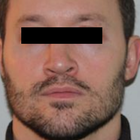
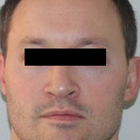
Front view

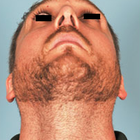
Front view
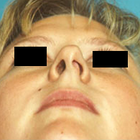
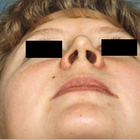
Front view
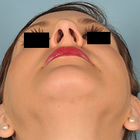

Front view
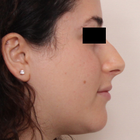
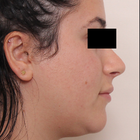
Full-side view
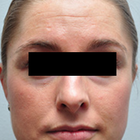
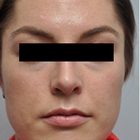
Front view
WHY US?
At Medijump, we're making medical easy. You can search, compare, discuss, and book your medical all in one place. We open the door to the best medical providers worldwide, saving you time and energy along the way, and it's all for FREE, no hidden fees, and no price markups guaranteed. So what are you waiting for?

Free

Best Price

Widest Selection

Risk-Free
What you need to know about Septoplasty in Poland

A septum is a bone and cartilage that separates the nasal cavity of the nose. When your nasal septum is off-center, crooked, or moved to one side of your nose, it is a condition known as a deviated septum and can make breathing difficult. To correct this condition, you may need to undergo Septoplasty, where your septum will be straightened to allow better airflow through your nose. This surgery is the only way to fix a deviated septum. However, septoplasty may also be performed to treat long-term sinusitis, remove nasal polyps, or treat other conditions that block the nasal airways. Sometimes, surgeons also recommend this surgery to stop recurrent nosebleeds and facial pains. For conditions other than deviated septum, surgeons often only recommend septoplasty after ruling out other treatments.
What does a Septoplasty Procedure Involve?
A deviated septum is common, but when the condition is severe, it can block one side of your nose and reduce airflow. It can also contribute to crusting or bleeding. If you experience difficulty breathing through your nose that significantly affects your life, you may want to consider septoplasty. Before the surgery, your doctor will review the details of the surgery and ask you to complete some routine tests, such as a blood test, electrical heart tracing, or X-ray. Be sure to tell your doctor if you have any possible allergies. To prepare for the procedure, you may need to stop taking certain medications at least two weeks before the surgery because they can increase your risk of excessive bleeding and the medications include aspirin, ibuprofen, and other blood-thinners.
Septoplasty can be carried out under local anesthesia or general anesthesia. If you have the surgery under local anesthesia, you should not eat or drink anything after midnight the night before the procedure. Not eating and drinking will prevent you from vomiting and choking if the anesthesia nauseates you during surgery. Your surgeon will start the surgery by making an incision on one side of your nose to access the septum. They will then lift the mucosa lining that covers the cartilage and bone. Next, they will reshape the cartilage and bone to move the deviated septum to the correct position. Extra pieces of bone or cartilage that make barriers will be removed. Then, they will reposition the mucous membrane. You may need stitches to hold the septum and membrane in place. Soft silicone splints are sometimes inserted inside the nostrils to support the septum. The whole procedure takes between 30 to 90 minutes to complete.
How Long Should I Stay in Poland for a Septoplasty Procedure?
Septoplasty is an outpatient procedure, which means you will likely go home on the same day of the surgery after the anesthesia has worn off unless major complications arise. However, you should stay in the Poland for 3-4 days for the initial recovery and follow-up checkups. If your surgeon places splints in the nose, they will be removed within seven days. You may return home when your surgeon allows you as long as there is no complication.
What's the Recovery Time for Septoplasty Procedures in Poland?
You may feel drowsy for a few hours following the surgery and you may also feel pain. However, your surgeon will prescribe medication to help with the pain. Some congestion and bleeding can occur after you are discharged from the hospital as your body recovers, but these symptoms should be gone in 2 weeks. The recovery period varies from one person to another. In general, you should be able to return to work within a few days, but you should allow at least three weeks before going back to your full normal routine. You should also limit your physical activities such as exercise for several weeks to minimize swelling and speed up healing because intense physical activities can increase your blood pressure and lead to bleeding.
What sort of Aftercare is Required for Septoplasty Procedures in Poland?
Your doctor will give you post-operative care instructions, which you will need to follow, The wound on your nose will heal fairly quickly, and your breathing will improve shortly after the procedure. For a quicker recovery, you may need to elevate your head at night to keep the swelling down, wear a button-up shirt so you do not need to pull clothing over your head, and do not blow your nose for at least two to three days after surgery. Avoid drinking alcohol, smoking tobacco, returning to work too soon, strenuous activities, and being in a crowd where people are smoking or coughing.
What's the Success Rate of Septoplasty Procedures in Poland?
The success rate for septoplasty is high, with up to 85% of people experiencing a significant improvement in their nasal blockage after surgery.
However, some people will require a second surgery if they are not satisfied with the results. Septoplasty is a very low-risk procedure, but you should be aware of the possible complications and side effects and these risks can include:
- Bleeding in small amounts is common, but in rare cases, excessive bleeding may occur.
- Infection can occur after septoplasty because the nose is not a sterile environment.
- Toxic shock syndrome is a very rare and life-threatening infection.
- Septal perforation is a small hole that can sometimes develop in the nasal septum during or after the surgery.
- Spinal fluid leak and it is extremely rare.
Other risks such as scarring, and altered nose shape, discoloration of the nose, a decreased sense of smell, tooth or nose numbness, and continuing symptoms are also possible. Other than following your surgeon’s aftercare instructions, keeping the nose clean and washing your hands often can reduce the risks.
Are there Alternatives to Septoplasty Procedures in Poland?
Although most conditions of a deviated septum can only be treated by septoplasty, there are nonsurgical treatments for other nasal blockages to help you breathe better. If your nasal blockage is caused by an allergy, you may take antihistamines from your doctor or over-the-counter. In cases of bacterial infection, your doctor can prescribe antibiotics to help clear the nasal airways.
Whilst the information presented here has been accurately sourced and verified by a medical professional for its accuracy, it is still advised to consult with your doctor before pursuing a medical treatment at one of the listed medical providers
No Time?
Tell us what you're looking for and we'll reachout to the top clinics all at once
Enquire Now

Popular Procedures in Poland
Prices Start From $1,945

Prices Start From $101

Prices Start From $192

Prices Start From $500

Recommended Medical Centers in Poland for Septoplasty

- Interpreter services
- Translation service
- Religious facilities
- Medical records transfer
- Medical travel insurance
- Health insurance coordination
- TV in the room
- Safe in the room
- Phone in the room
- Private rooms for patients available

- Interpreter services
- Translation service
- Religious facilities
- Medical records transfer
- Medical travel insurance
- Health insurance coordination
- TV in the room
- Safe in the room
- Phone in the room
- Private rooms for patients available

- Interpreter services
- Translation service
- Religious facilities
- Medical records transfer
- Medical travel insurance
- Health insurance coordination
- TV in the room
- Safe in the room
- Phone in the room
- Private rooms for patients available

- Interpreter services
- Translation service
- Religious facilities
- Medical records transfer
- Medical travel insurance
- Health insurance coordination
- TV in the room
- Safe in the room
- Phone in the room
- Private rooms for patients available

- Interpreter services
- Translation service
- Religious facilities
- Medical records transfer
- Medical travel insurance
- Health insurance coordination
- TV in the room
- Safe in the room
- Phone in the room
- Private rooms for patients available

- Interpreter services
- Translation service
- Religious facilities
- Medical records transfer
- Medical travel insurance
- Health insurance coordination
- TV in the room
- Safe in the room
- Phone in the room
- Private rooms for patients available

- Interpreter services
- Translation service
- Religious facilities
- Medical records transfer
- Medical travel insurance
- Health insurance coordination
- TV in the room
- Safe in the room
- Phone in the room
- Private rooms for patients available

- Interpreter services
- Translation service
- Religious facilities
- Medical records transfer
- Medical travel insurance
- Health insurance coordination
- TV in the room
- Safe in the room
- Phone in the room
- Private rooms for patients available

- Interpreter services
- Translation service
- Religious facilities
- Medical records transfer
- Medical travel insurance
- Health insurance coordination
- TV in the room
- Safe in the room
- Phone in the room
- Private rooms for patients available

- Interpreter services
- Translation service
- Religious facilities
- Medical records transfer
- Medical travel insurance
- Health insurance coordination
- TV in the room
- Safe in the room
- Phone in the room
- Private rooms for patients available
Septoplasty in and around Poland
About Poland
Poland, as one of Central Europe's most expansive nations, has only recently begun to make its mark as a key player in the realm of Medical Tourism. Being particularly appealing to tourists from neighboring regions, many visitors arrive seeking Septoplasty procedures. Poland's open border policy further simplifies travel between its territory and other countries within the European Union (EU), making it an accessible destination for many.
The Polish healthcare system comprises a blend of public and private establishments. While none of these facilities hold JCI accreditation, they are endorsed by local accreditations issued by the Polish Ministry of Health. Their recognition within the European Union testifies to the quality and reliability of these certifying bodies.
In Poland, the most frequently sought-after medical procedures encompass dental, cosmetic, orthopedic, and bariatric treatments. Impressively, the costs of these treatments are significantly lower than what one would expect to pay in Poland's Western European counterparts. Beyond Poland's vibrant capital, Warsaw, cities such as Krakow, Jelenia Gora, and Wroclaw have emerged as favored destinations among medical tourists.
Popular Parts of Poland
Poland, with a population exceeding 38.5 million, is a nation steeped in rich history and recognized for its whopping fourteen UNESCO World Heritage Sites. Despite frequently being overshadowed in the realm of tourism, the country in reality, boasts of a multitude of alluring attractions waiting to be explored and appreciated.
- Warsaw, Poland’s capital provides tourists with a mix of old and new. Restored Gothic buildings and modern glass structures stand side by side. The city offers a scenic view. Wander around the streets of Old Town to see the oldest part of the city. Warsaw was also the former home of Frederic François Chopin; tourists can retrace his steps by visiting Saxon Garden, where Chopin’s family used to live next door.
- Krakow is Poland’s former capital. The city is full of charms; from cobbled streets, beautiful squares, pretty buildings, churches, and a castle. Wawel Castle, located in the Old Town area, is an architectural wonder with medieval, baroque, and renaissance style. The city has numerous museums that provide insights into its fascinating history.
- Gdansk stands as one of the country's most breathtaking seaside cities. It houses some of the finest museums in Poland and is renowned for its thriving nightlife and diverse culinary scene. Visitors are encouraged to admire the vibrant street art, delve into history at the numerous museums, explore the charms of the Old Town, and embark on a gastronomic adventure with a food tour in Gdynia. In a nutshell, Gdansk offers a rich and memorable travel experience.
- Poznan will amaze tourists once they see its vibrant, playful, and unique treasures. As the birthplace of the Polish nation, the city offers many historical attractions as well as urban green spaces. Tour the Lech Brewery to learn more about the brewing process of beer visit the Old Market Square and find an array of bars and food stalls.
- Wroclaw is not as popular as other cities in Poland. It’s actually full of attractions, incredible architecture, and hidden gems. Tourists will find dwarf statues throughout the city and can go on the dwarf trail. Market Square is the city’s centerpiece that blends colorful buildings and gives a scenic view, especially in winters.
Weather and Climate in Poland
Poland has a temperate climate and sometimes experiences rough weather. Spring starts in late March to May. The season is characterized by a wave of warmer weather with less frequent rain. It is one of the best times to visit Poland because the temperature is comfortable.
Poland's summer season extends from June until August and brings with it a certain unpredictability in weather patterns. The general climate is warm, with temperatures hovering between 18 to 30°C. Amidst sunny spells and elevated temperatures, frequent rain showers and storms are also common phenomena. This period marks the peak of the tourism season and tourists can expect prices to see a corresponding increase. Despite the occasional rains, summer promises a delightful time to experience Poland in all its warmth.
September to November is Autumn, the season where the temperature starts to drop. Late September and October are still warm, while November is cold and wet. Sunny days during this season are known as “Polish Golden Autumn.”
Winter in Poland, which runs from December until early March, can be exceedingly cold. Temperatures often tumble to an average range of 0 to -10°C and can even drop as low as -20°C. Despite the chilly conditions, this is actually the peak season for mountain ski resorts, attracting numerous enthusiasts to take advantage of Poland's picturesque winter landscapes.
Getting Around in Poland
Most international flights arrive at Warsaw Frederic Chopin Airport. It’s Poland’s largest and busiest airport. The airport serves domestic and has International connections with many cities around the world. It is the hub for LOT Polish Airlines. Budget airlines such as Wizz Air and EasyJet also operate flights from this airport. There is a smaller airport, Warsaw Modlin Airport, which handles more budget airlines.
To get to the city center, bus, taxi, and train are available. There are five public buses that stop at Warsaw’s city center; bus 175, bus 188, bus 148, bus 331, and bus N32 (night bus). Taxis are available, but always make sure to use licensed taxi services. The fare from the airport to the city center is around 40 PLN. Chopin Airport is linked to Legionowo and Sulejówek Miłosna by a railway service. Tourists can buy ZTM tickets to ride the bus and train which can be purchased at the Passenger Information Point in the arrivals hall, ticket machines at bus stops and train station entrance, or from bus drivers.
Ample public transportation options simplify getting around in Poland. Trains, in particular, offer an incredibly budget-friendly means of travel. For instance, the journey from Krakow to Warsaw is set to cost approximately 45 PLN and spans a duration of around three hours. Meanwhile, a slightly longer five-hour train journey from Warsaw to Gdansk can be undertaken at a reasonable fare of around 65 PLN. Such connectivity and affordability make exploration within Poland both easy and economical.
Within the cities, local buses in the central zone cost around 4 PLN (a single-fare ticket). Major cities offer one-day tickets for 20 PLN. Taxis are relatively cheap and tourists can get around the city quickly. Taxis are metered and usually start at around 6 PLN to 8 PLN. Unlicensed taxi drivers are most likely to cheat and charge more. There are taxis that put a fake phone number in their cars, be careful and ask your hotel staff for the number of the taxi company they have used previously. Cycling is a good way to explore the scenery in Poland. There are many bike rentals around the country, always be aware of drivers since some are careless.
For cities like Krakow, tourists are highly recommended to secure tourist cards. These cards provide unlimited access to public transportation for a period of one to three days. In addition, they also offer free or discounted admission to several museums. This is a great bargains that grants tourists flexibility and sizable savings to fully relish their visit.
Tourist Visas in Poland
Poland is part of the Schengen Area. Citizens of the United States, Canada, Australia, New Zealand, Japan, Israel, and several other countries do not need to obtain a visa and can stay in Poland for up to 90 days. EU citizens do not need a visa and can stay indefinitely. Other nationalities must check with their local Polish embassy. All visitors must hold a passport valid for at least six months.
Additional Information about Visa in Poland:
- It is important to note that the visa requirements for Poland can change at any time, so it is always best to check with the Polish embassy or consulate in your home country before you travel.
- If you are planning to stay in Poland for longer than 90 days, you will need to apply for a visa. You can do this at the Polish embassy or consulate in your home country.
- When applying for a visa, you will need to provide a number of documents, including a valid passport, proof of travel insurance, and proof of financial means.
Additional Information
- Local Currency: the official currency is the Polish złoty (PLN). 1 USD converts to 4.21 PLN.
- Money & Payments: ATMs are available in cities and towns; even small villages should have at least one. The best way to exchange rates is at banks or withdrawing money from ATMs. Credit cards (Visa and MasterCard) are accepted in most hotels and restaurants. Always carry small cash and coins for shops and cafes. Tipping in Poland is mostly optional. In restaurants, 10% is the standard. Room-service staff and porters in hotels expect to be tipped. Taxis don’t expect tips.
- Local Language: The official language is Polish. Most of the locals in the tourist areas will have decent English. Foreign tourists should be aware that all official information including street signs and directions are only written in Polish.
- Local Culture and Religion: Christianity is the largest religion in Poland with 87.5% of the population identified as Roman Catholic.
- Public Holidays: Poland celebrates major Christian holidays such as Christmas and Easter. The country hosts many festivals throughout the year such as St. Dominik’s Fair every July to August, Light & Move Festival every October, and Ice Festival every December.
Popular Searches
- Plastic Surgery in Thailand
- Dental Implants in Thailand
- Hair Transplant in Thailand
- Breast Augmentation Thailand
- Gastric Sleeve in Thailand
- Gender Reassignment Surgery in Thailand
- Laser Hair Removal in Bangkok
- Botox in Bangkok
- Dermatology in Bangkok
- Breast Augmentation in Bangkok
- Coolsculpting in Bangkok
- Veneers in Turkey
- Hair Transplant in Turkey
- Rhinoplasty in Turkey
- Stem Cell Therapy in Mexico
- Rhinoplasty in Mexico
- Liposuction in Mexico
- Coolsculpting in Tijuana
- Rhinoplasty in Korea
- Scar Removal in Korea
- Gastric Sleeve in Turkey
- Bone Marrow Transplant in India
- Invisalign in Malaysia
- Plastic Surgery in the Dominican Republic
- Tummy Tuck in the Dominican Republic
- Plastic and Cosmetic Surgery in Poland
- Rhinoplasty in Poland
- Hair Implant in Poland
- Dental Implants in Poland
- IVF in Turkey







